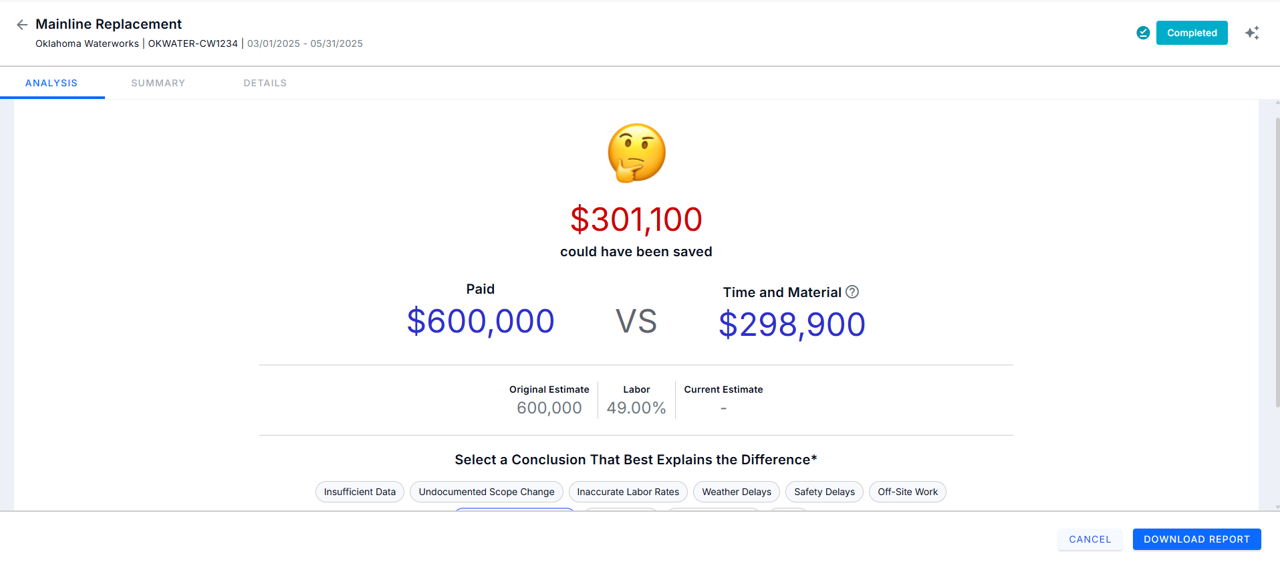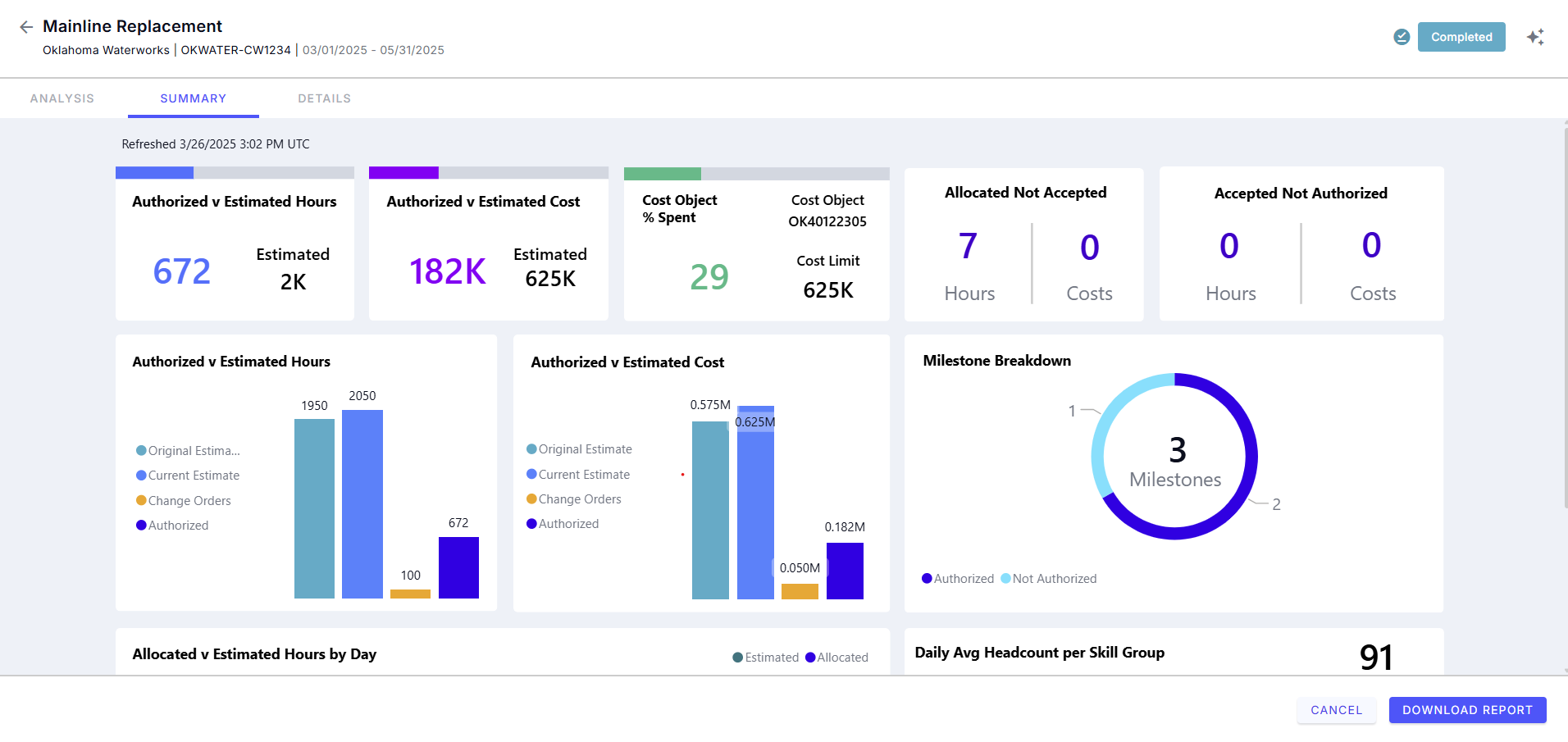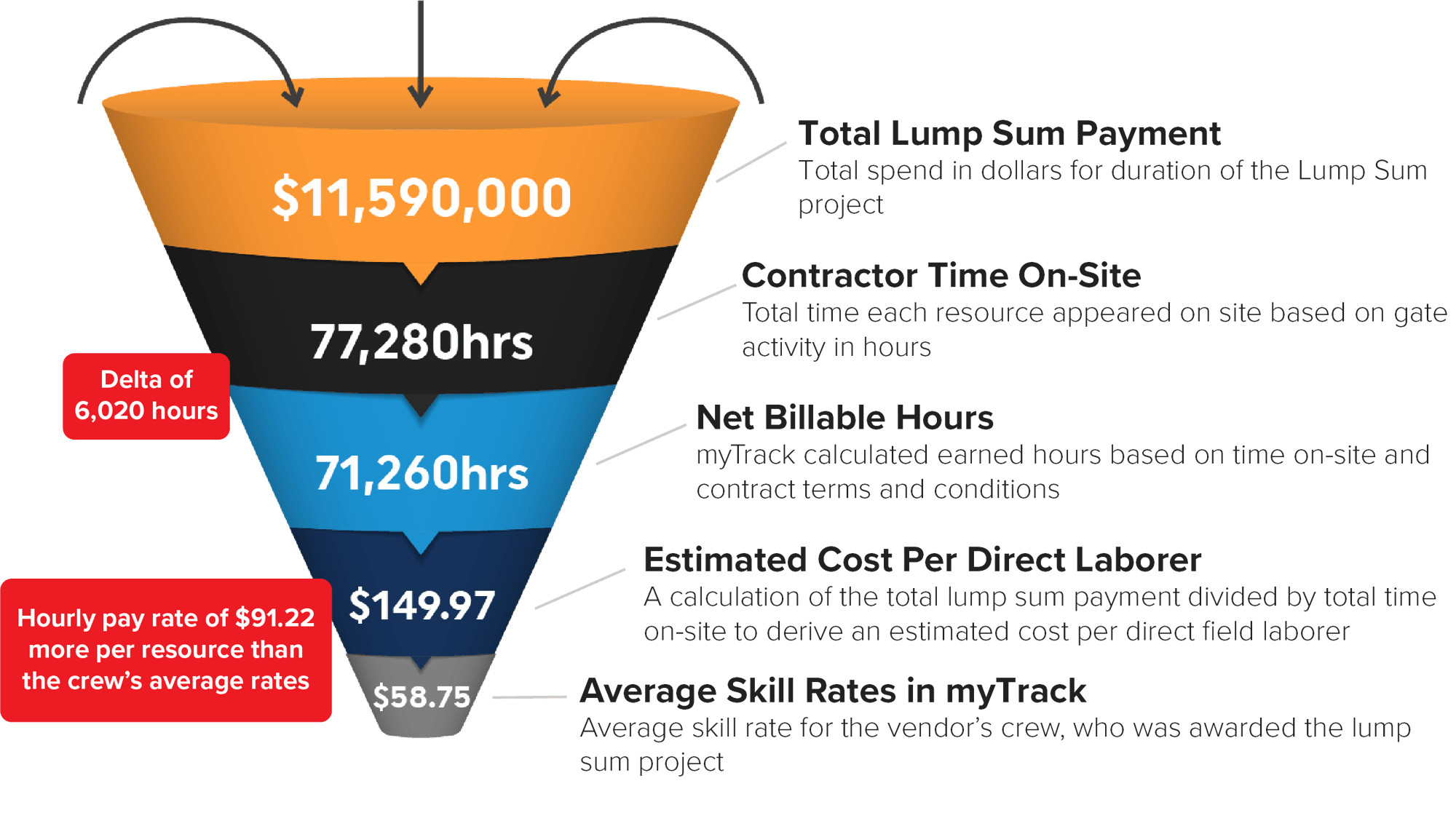Transparent Lump Sum
![]()
Transparent Lump Sum brings real-time visibility, accountability, and control to fixed-price contractor work—unifying Lump Sum and Time and Material contracts in one system.
Lump Sum Promises Simplicity—But Often Hides Risk
Lump Sum contracting has long been a black box; owners had no way of knowing if they were getting a fair deal or just paying a hidden premium. Transparent Lump Sum changes that. It shows what the work would have cost under Time & Materials (T&M), revealing embedded risk premiums and inflated bids. For the first time, customers can see the true cost behind the fixed price.
Transparent Lump Sum is more than just real-time visibility—it’s a breakthrough in contract strategy. Owners can now compare vendor outcomes, detect excessive contingencies, and make smarter decisions about when to use Lump Sum vs. T&M. Transparent Lump Sum replaces assumptions with proof and gives companies the data to rethink how they scope work, choose contracting strategies, and manage contractor work.


Why Track Lump Sum?
Even when the price is fixed, the risks aren’t.
Transform the Way You Manage Lump Sum Projects
Transparent Lump Sum exposes what traditional tracking methods can't—giving you the visibility to monitor performance, validate spend, and protect your budget.

Key Capabilities
Eliminate Double Billing and Hidden Costs
Allocate every labor hour to a single job. Identify excessive risk premiums and hidden overhead, and eliminate duplicate charges across T&M and Lump Sum scopes.
Real-Time Transparency & Tracking
Monitor labor and equipment hours, earned progress, material usage, and scope changes in real time.
Validate Milestones and Change Orders
Ensure payments and scope changes are backed by real progress data. Attach documentation and separate change orders from original estimates for better control.
Compare Lump Sum and T&M Performance
Compare outcomes across contract types with automated analysis of labor, cost, and schedule performance—no manual effort required.
Uncover Hidden Costs in Lump Sum Contracts with myTrack

The Findings:
$
0
M
TOTAL LUMP SUM PAYOUT
$
0
M
ESIMATED ACTUAL T&M COST
$
0
M
RISK PREMIUM
Read what satisfied customers have to say...
![]()

“We found risk premiums of 100% or more built into our Lump Sum jobs. Transparent Lump Sum revealed just how much we were overpaying—and it changed the way we approach contract strategy.”
— VP of Procurement, Fortune 100 Energy Company
